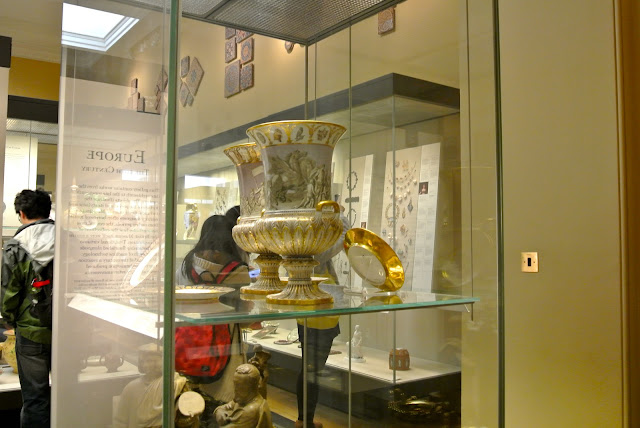This past weekend, I ventured to London with one of my classes. Although our itinerary was pretty intense the first two days, we were left to explore during the entirety of Saturday. Mary and I decided to peek into London's national identity and find out what a "vast collection of world art and artefacts" looks like with a (free!) visit the British museum.
With free maps in hand, we set out "to experience some of the highlights of the magnificent permanent collection."


To enhance the privileged opportunity, the Museum offers opportunities to touch objects and learn more about them under the supervision of experts. I believe the intention is that which Fiona Candlin hypothesizes in The Dubious Inheritance of Touch: Art History and Museum Access, "touch potentially opens up previously prohibited ways of understanding museum collections and includes visitors who have traditionally been marginalized by an emphasis on visual learning. As such, it could represent a new and positive step towards recognizing different forms of knowledge and in correlation acknowledges the rights of blind people, among others, to access their collective cultural heritage."

Ancient Greek and Roman artifacts and the rotating exhibitions were accessible from the upper floors as well. On our visit, they were displaying Spanish prints and drawings from the Renaissance to the time of Goya, in addition to a look at the significance of water, tea, and wine across Asian cultures. A visual history of Europe was additionally on display.

The biggest crowds I saw, however, could be found on the ground floor. Not in the Americas exhibits, nor of those of China, South Asia, and Southeast Asia, but in room 4: Egyptian sculpture. It is here that The Rosetta Stone is set on display surrounded by thick glass. I'd assume that this amazing "key to deciphering hieroglyphics" tops the list of A History of the World in 100 Objects written by British Museum Director in conjunction with BBC Radio.
Où? Great Russell Street, WC1B 3DG, London
Quand? Daily,10am-5:30pm; Friday, 10am-8:30pm
Comment? Tube, Tottenham Court Road, Holborn, Russel Square, Goodge Street; Bus 1, 7, 8, 19, 25, 38, 55, 98, 242, 10, 14, 24, 29 73, 134, 390, 59, 68, X68, 91, 168, 188





No comments:
Post a Comment